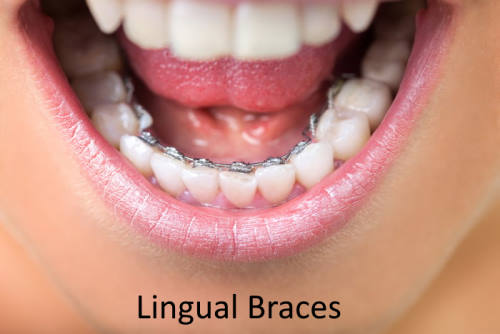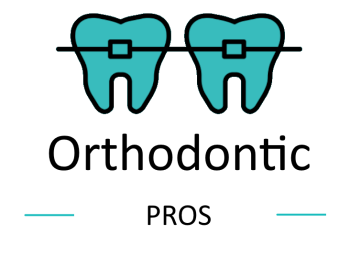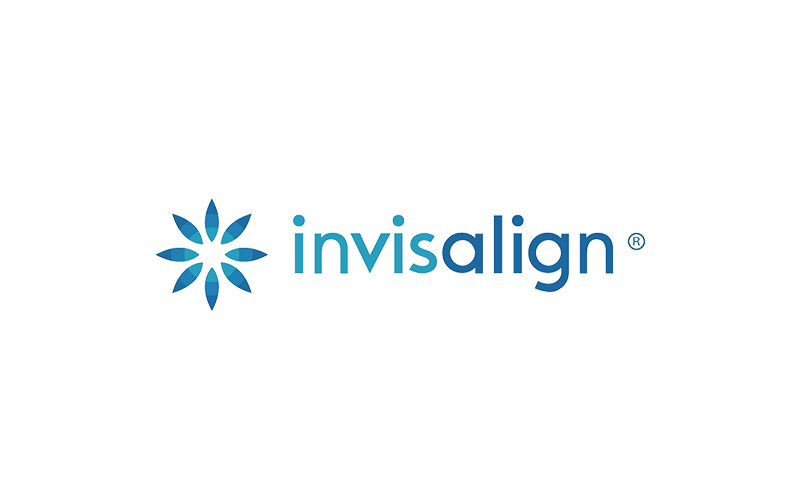Table of Contents
 Unlike traditional braces, lingual braces are discreetly placed on the back of your teeth, making them virtually invisible to others. Whether you’re a busy professional, a student, or someone who wants to achieve a confident smile without compromising aesthetics, lingual braces offer a discreet and effective orthodontic solution. Say goodbye to self-consciousness and hello to a beautifully aligned smile with the power of lingual braces.
Unlike traditional braces, lingual braces are discreetly placed on the back of your teeth, making them virtually invisible to others. Whether you’re a busy professional, a student, or someone who wants to achieve a confident smile without compromising aesthetics, lingual braces offer a discreet and effective orthodontic solution. Say goodbye to self-consciousness and hello to a beautifully aligned smile with the power of lingual braces.
What are Lingual Braces?
Braces have been a trusted solution for enhancing smiles and addressing dental issues. They effectively straighten teeth, close gaps, and correct underbite, overbite, or cross-bite problems in the upper and lower jaw. With their versatility and proven results, braces are reliable for achieving a healthier and more aligned smile.
Lingual braces work similarly to traditional braces but with a discreet twist. The brackets, arch wire, and ligatures are placed on the inside (tongue-side) of the teeth, making them virtually invisible. As the least conspicuous orthodontic option available, lingual braces have gained popularity among teenagers and adults seeking a subtle way to straighten their teeth.
Few of the Lingual orthodontic brackets manufacturers
With their advanced technology and commitment to patient satisfaction, these manufacturers have paved the way for comfortable, aesthetically pleasing lingual braces.
- Ormco
- Dentaurum
- Hubit
How do they work?
Lingual braces serve a function very similar to traditional braces, worn on the teeth’ front surfaces. However, placing them on the inner side of the teeth can present particular challenges for both the orthodontist and the patient. One significant challenge is the limited space between the upper and lower sets of teeth, making it difficult to accommodate the braces. Custom brackets are created using CAD/CAM technology to overcome this issue. Let’s delve into the details of this procedure.
- Clinical Evaluation – Our team of expert dentists will thoroughly examine your teeth to determine if Hidden Braces are the ideal choice for your treatment. They will carefully assess the extent of misalignment and evaluate study models and radiographic images of your teeth. This comprehensive evaluation enables them to create a personalized treatment plan tailored to each patient’s needs.
- Making Impressions of Your Teeth – We will ensure that your teeth are thoroughly cleaned before taking an impression. Following this, we will utilize a specialized scanner to capture three-dimensional impressions of both your upper and lower jaws. This advanced technology allows us to create precise digital records of your teeth.
- Cast and set-up – Using these impressions, the lab technician creates a cast and adjusts it based on the dentist’s instructions. This process results in a “set-up,” a tangible representation of your teeth in an ideal alignment. The set-up serves as a physical mock-up of how your teeth will look when perfectly aligned.
- Fabrication of Treatment Plan -The mock-up dimensions are digitally captured in three dimensions using specialized software and then inputted into the computer. This data is utilized by specialized CAD (computer-aided design) software to create custom-designed brackets tailored to fit your teeth. Each tooth’s bracket is individually designed for precise customization.
- Production – The mock-up dimensions are digitally captured in three dimensions using specialized software and then inputted into the computer. This data is utilized by specialized CAD (computer-aided design) software to create custom-designed brackets tailored to fit your teeth. Each tooth’s bracket is individually designed for precise customization.
- The applicator tray – The custom-fabricated brackets are securely placed within an applicator tray, which serves as a stent. This stent is designed to fit perfectly over your teeth, ensuring precise alignment of the brackets during the bonding procedure. Once the stent with the brackets is prepared, it is sent to your dentist. The attachment of the brackets to your teeth is carried out during your next appointment, following a series of steps that typically involve the following:
-
- Teeth preparation – The teeth are thoroughly cleaned before bonding the brackets to ensure optimal adhesion. Additionally, the tooth surfaces are gently roughened to enhance the bonding strength.
-
- Cement application – Dental cement is carefully applied over the brackets within the applicator tray.
-
- Bonding – The applicator tray is precisely positioned against the teeth, ensuring proper alignment, and all the brackets of either the upper or lower jaw (depending on the case) are bonded simultaneously.
-
- Removal of the tray – After the cement has fully cured, the dentist will remove the tray, leaving the brackets securely attached to the teeth. Any excess bonding material can be gently scraped away to ensure a clean and comfortable fit.
-
- The archwire – Following the attachment of the brackets, the archwire can be placed without the need for ligatures.
Length of treatment
The duration of the treatment can vary depending on the specific case, typically ranging from one to three years. Once the teeth have been properly realigned, the braces are removed. You will have a removable or fixed retainer to wear to maintain the corrected alignment for several additional months. This helps ensure that your bite remains stable and prevents any regression to the previous state.
Taking care of your Lingual braces
Due to their hidden and inward location, lingual braces require special care. To ensure successful treatment, we recommend keeping the following points in mind:
- Maintain good oral hygiene – Maintaining good oral hygiene is essential in preventing tooth decay and gum disease. This involves several necessary steps:
-
- Brush your teeth twice a day, dedicating at least two minutes to clean all surfaces of your teeth thoroughly.
-
- Use a soft toothbrush with rounded bristles to clean the gum line and the teeth. Additionally, an interdental brush can be utilized to clean the spaces between the teeth. In some cases, an oral irrigation device may also be beneficial for maintaining oral health.
-
- Regular flossing helps remove food particles and plaque between the teeth and the gum line, contributing to overall oral hygiene.
- Protecting oral soft tissues – In case the braces irritate the tongue or other soft tissues, it is advised to apply dental wax to the inside surfaces of the teeth, particularly in the areas that are causing discomfort. Dental wax provides a protective barrier and helps alleviate any irritation or pain.
- Regular Visits – Besides regular orthodontic appointments, it is essential for children, adolescents, and young individuals undergoing orthodontic treatment to schedule teeth cleaning and prophylaxis visits with us every six months. These routine visits help maintain oral hygiene, prevent potential issues, and ensure the overall success of the orthodontic treatment.
- Diet Management – To protect your brackets and ensure your treatment’s effectiveness, avoiding consuming sticky, chewy, and hard foods is advisable. This includes refraining from eating raw vegetables such as carrots and apples, as these foods can dislodge the brackets. By following these guidelines, you can help maintain the stability and functionality of your braces.
Pros and Cons
Lingual braces offer distinct advantages compared to other types of teeth alignment devices. However, it is essential to be aware of their specific limitations. Understanding these factors can assist in selecting the most suitable and convenient orthodontic treatment option that aligns with both affordability and convenience. Let’s delve into a brief discussion of both the advantages and limitations of lingual braces.
Pros
- The primary and most significant advantage of near-invisible braces is their discreet appearance. These braces are not easily noticeable casually, and their presence is only discernible upon close examination.
- Lingual braces are even less visible than clear plastic aligners, as the latter may occasionally reveal their presence by emitting a subtle sheen. With lingual braces, their positioning on the inner side of the teeth ensures a higher level of discretion.
- Lingual braces give the dentist more significant control over individual teeth’ movement. This level of control allows for precise adjustments and enables the orthodontist to achieve more targeted and customized tooth movements throughout the treatment process.
Cons
- Since lingual braces are positioned on the inside of the teeth, they can come into contact with the tongue, potentially irritating. This irritation may result in discomfort while swallowing or speaking. Additionally, lingual braces can restrict the movement of the tongue, further contributing to possible discomfort or temporary changes in speech.
- The tongue plays a vital role in producing certain sounds by contacting the teeth. However, with lingual braces positioned in the area where the tongue typically touches, it may initially affect your ability to produce those sounds accurately. This adjustment period may require practice and patience to regain proper pronunciation and speech clarity.
- Due to their placement on the inside of the teeth, lingual braces require special attention when it comes to regular oral hygiene care.
- Accurately placing the brackets behind the teeth with limited visibility can be challenging and requires additional time and care. Dentists must undergo specialist training to ensure precise positioning of the brackets in lingual braces.
- Adapting to lingual braces generally requires a longer adjustment than traditional visible braces. It may take some time for patients to become accustomed to the unique feeling and sensation of lingual braces due to their position on the inner side of the teeth.
More “Hidden” Advantages
- Shortened treatment time
- Braces are invisible
- Customized to your Bite
- Affordable Treatment thru Advanced Technology
Lingual braces cost
Health insurance plans typically do not include coverage for braces for individuals over the age of eighteen. However, supplementary plans may be available to cover orthodontic treatment. It is essential to check with your insurance provider regarding coverage and any available options. Additionally, expenses related to braces can be tax deductible if they exceed a certain threshold. It is advisable to verify these details before proceeding with the purchase of braces.
When considering an insurance plan, it is recommended to inquire about the percentage of coverage offered and the lifetime maximum benefit. Coverage amounts can vary significantly, but a typical example is 50% coverage with a maximum lifetime benefit of $1500 per child. Our office benefits coordinator, located nearby, can assist you in understanding your insurance coverage and provide information on flexible payment options. We also offer in-house zero-interest financing options to facilitate access to this transformative treatment for your child or yourself.
How much do Lingual Braces Cost?
Cost for Lingual braces will range from $8,000 to $13,000. On average, Lingual Braces cost slightly higher than Invisalign or clear braces. Insurance may pay up to $1,500 for Lingual hidden braces that are put on inside of the teeth.
What orthodontic problems can Lingual Braces treat?
Lingual braces treat orthodontic problems, including overcrowding, gaps, misalignment, overbites, underbites, and crossbites. Placed discreetly on the inner side of the teeth, they provide effective solutions for achieving a straight and harmonious smile.
For Crossbite
Crossbite refers to a malocclusion where the upper teeth bite on the inside of the lower teeth. This misalignment can impact single or multiple teeth, affecting the front, back, or both areas. Crossbites can lead to the following issues:
- Bone loss
- When the teeth have premature wear
- Less attractive smile
- Gum disease
- Weak chewing patterns
- Asymmetrical jaw development
Open Bite Malocclusion
This malocclusion arises when the upper and lower jaws are misaligned, resulting in a lack of contact between them when the mouth is closed. If left untreated, this condition can lead to the following complications:
- Premature wear of the molars.
- A less attractive smile.
- Jaw joint dysfunction
For Overbite
An overbite is a malocclusion where the upper teeth overlap the lower ones. In severe cases, it can lead to an asymmetrical eruption of the front and lower teeth and impact the development of the supporting bone. The following issues can arise from an overbite:
- The lower front part biting onto the gum tissue could lead to periodontal problems.
- Unusual wear of the lower part of the mouth.
For Underbite
An underbite occurs when the lower teeth protrude in front of the upper teeth, resulting in the lower front teeth biting ahead of the upper teeth when the mouth is closed. Often, this issue stems from the jaw being excessively forward. Causes include flared lower incisors, tipped-back incisors, a missing upper portion, or a combination of these factors. It is crucial to address underbites promptly due to the following reasons:
- Your smile is less attractive.
- It prevents the correct functions of the mouth.
- It can cause jaw-joint dysfunction.
Gaps in teeth, Diastema
Diastema, or tooth gaps, refers to visible spaces between two or more teeth, often found between the front incisors. In cases where the gap is minor and not accompanied by bite misalignment or other complications, Invisalign can effectively treat it. Invisalign Express is designed explicitly for minor dental issues involving a few teeth. Dentists may combine Invisalign with elastics or attachments for more complex cases, discreet and tooth-colored devices that facilitate precise tooth movement. To ensure your dentist’s expertise in Invisalign treatment, the American Academy of Cosmetic Dentistry (AACD) suggests requesting before and after photos, references, and evidence of ongoing education before treatment.
Lingual Braces FAQ
Are lingual braces worth considering?
Lingual braces offer a discreet alternative to conventional braces, as they are attached to the back surfaces of the teeth, making them less visible. However, it's important to note that lingual braces are typically more expensive than ceramic braces or Invisalign. Whether lingual braces are worth it depends on your individual needs and preferences and your long-term oral health goals.
Does dental insurance cover lingual braces?
Some dental insurance plans may cover some of the cost of lingual braces. It's recommended to contact your dental insurance provider to inquire about the specifics of your coverage. If you have questions regarding the cost of lingual braces with insurance, our team will gladly assist you.
Do invisible braces take longer to achieve results?
Generally, the duration of treatment with lingual braces is similar to that of traditional braces. Most individuals wear lingual braces for one to two years to achieve the desired results.

